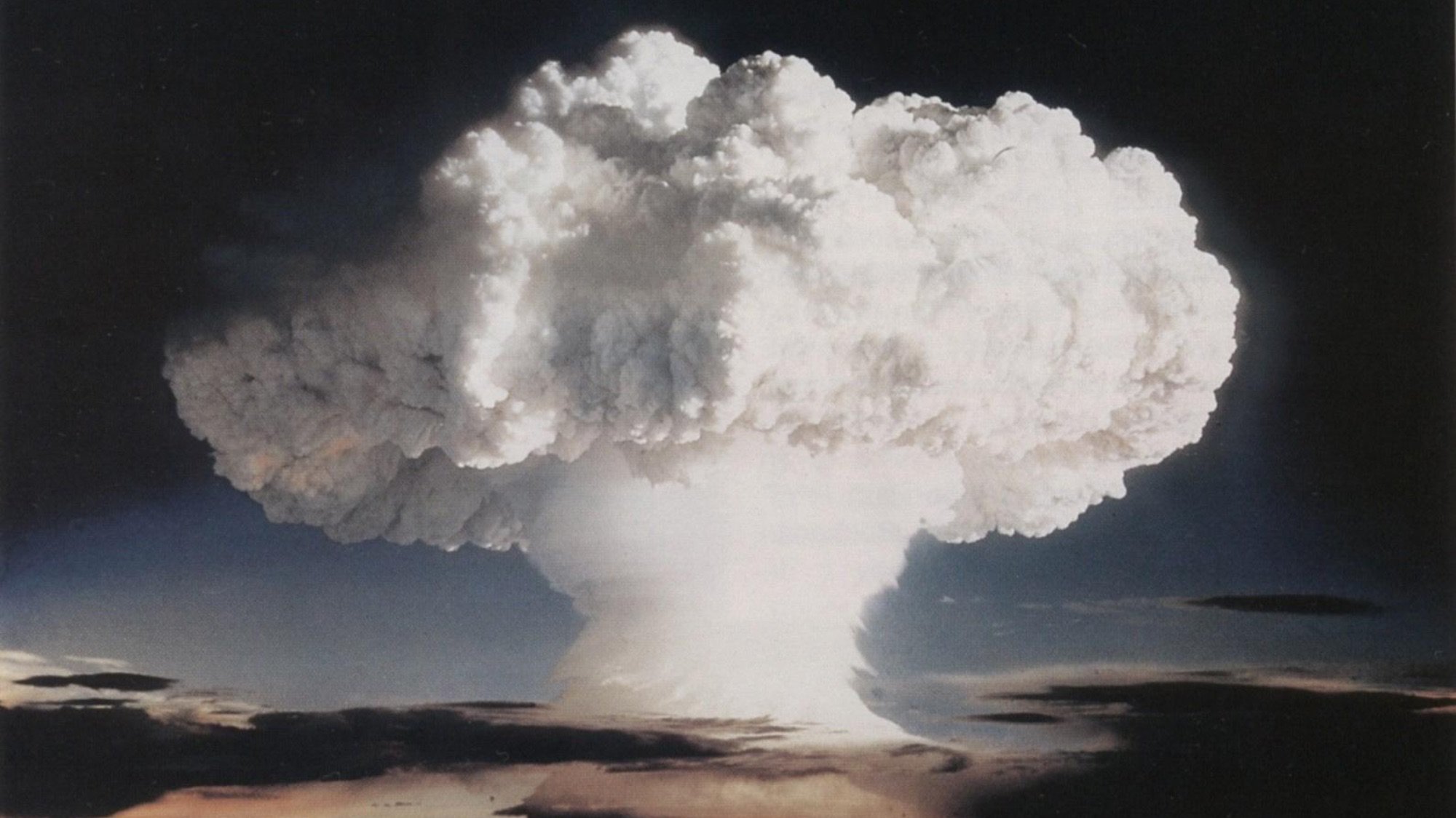Carving an artificial harbor out of Alaska’s remote northwest coast would take just an instant, claimed the Atomic Energy Commission (AEC) in 1958.
They’d just bury six atomic bombs under the earth, where Cape Thompson met the Chukchi Sea, then detonate them in a daisy chain nearly eight times more powerful than those dropped on Nagasaki and Hiroshima combined. Done at the right time of year, early spring when snow cover protected plants and most birds had absconded for warmer climes, there would be minimal fallout. The local Iñupiat community’s hunting season would be interrupted for only a few weeks; a few months, at most.
In exchange for the small amount of radiation given off by the “cleanest bombs available,” the region would gain a new way to extract natural resources; the local economy would flourish. But Project Chariot—the first to be seriously considered as part of the AEC’s wider Project Plowshare, which sought to harness nuclear power for good instead of evil—wasn’t just about Alaska or its resources.
“[Project Chariot] was both an end in itself and a means to an end,” explains Scott Kaufman, chair of the department of history at Francis Marion University and author of Project Plowshare: The Peaceful Use of Nuclear Explosives in Cold War America. “It was envisioned as an end in itself because the idea was to use nuclear explosives to create a harbor,” he says. “But it was also viewed as a means to an end because it would provide data necessary for what became the centerpiece of the Plowshare Project, which was the construction of a sea-level isthmian canal [a waterway created across a narrow strip of land] somewhere in Central America.”
The so-called “pan-atomic canal” would assuage what was, in the 1950s and 1960s, an unrelenting fear of invasion from Cold War boogeymen. The existing artificial waterway that ships used to cross the continent from the Atlantic Ocean to the Pacific, the Panama Canal, was not built at sea level on both sides. To get from one side to the other, boats had to be raised and lowered through six sets of locks. Depending on traffic, the process could take up to 12 hours to travel just 55 miles. More importantly, if just one lock were disabled or destroyed, the passage from east to west would be essentially inoperable, crippling the United States and its military defenses.
Nuclear bombs for peace
Around World War II, scientists and government officials noticed the incredible terraforming abilities of nuclear bombs. Atomic power, they believed, could quickly and easily reshape nature’s less desirable geographical features. The Plowshare Project dreamt up idealistic, peacetime applications, such as reversing the course of rivers, triggering small earthquakes to prevent large ones f
